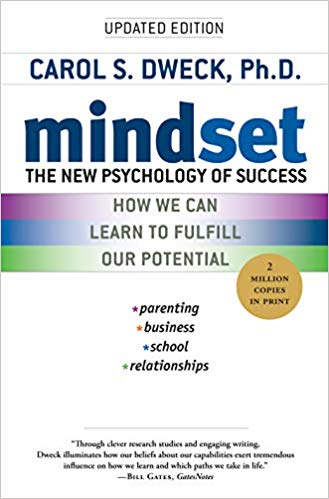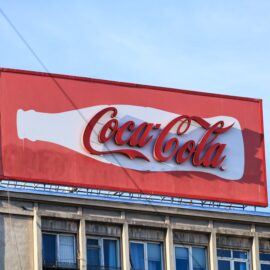

This article is an excerpt from the Shortform summary of "Mindset" by Carol Dweck. Shortform has the world's best summaries of books you should be reading.
Like this article? Sign up for a free trial here .
Who are examples of weak leaders in the history of CEOs? Why did they fail so spectacularly? Could those failures have been avoided?
We’ll look at three weak leaders, all CEOs, whose fixed mindsets caused them to sacrifice their companies for their egos. Learn from their mistakes to benefit your entire organization.
Weak Leader #1: Lee Iacocca of Chrysler
Lee Iacocca was tapped to turn Chrysler around in the 1980s. He’d been fired by Henry Ford II, which left him angry and determined to prove himself through saving Chrysler. In his first few years, he made good hires, introduced new car models, and sought bailout loans. In his autobiography, he bragged that he was a hero.
However, Chrysler soon got into trouble again, while Iacocca focused on polishing his image. This is the sign of weak leaders. He spent money on things that would boost Chrysler’s stock to impress Wall Street instead of investing in new car designs and manufacturing efficiencies. He got rid of ambitious, intelligent people he felt threatened by.
Rather than responding to Japan’s innovative new cars with better ones, he made excuses and demanded the U.S. retaliate with tariffs. He spent lavishly on a corporate suite while morale in the company plummeted. The board finally grew fed up and got rid of him.
Weak Leader #2: Albert Dunlap of Scott Paper
Albert Dunlap considered himself a superstar who saved dying companies, such as Scott Paper. He compared himself to Michael Jordan and Bruce Springsteen in star power. His fixed mindset developed in childhood when his family was poor and he felt the need to prove his worth. In his career, he used shareholder profits to do that. This short-term goal was his only measure of success. He had no interest in strengthening companies for the long term, only in boosting the stock enough to sell them for a profit. This is an indication that he was a weak leader.
After taking over Sunbeam in 1996, he fired 6,000 people and cut most stores. But in a sense, he was too successful — stock prices rose so much that the company was too expensive to sell. So he was stuck with running it. Instead of working hard and learning, he inflated revenue numbers, fired critics, and covered up the real numbers. In less than two years, the company failed and he was ousted.
Weak Leaders #3 + #4: Steve Case and Jerry Levin of AOL Time Warner
What happens when two superstar CEOs with fixed mindsets combine their companies? They turn into weak leaders. Steve Case of AOL and Jerry Levin of Time Warner both felt superior, liked to intimidate, took others’ credit, refused to hear complaints, and fired critics. When they merged their companies, AOL was near ruin, but instead of working together to salvage it, they competed for power. Levin failed first and Case refused to work with the new CEO because he didn’t want to share power and credit — he’d rather let the company fail. When he finally was forced to resign, he denied responsibility for any problems. By the end of 2002, AOL Time Warner had lost nearly $100 billion in market value, the largest annual loss in U.S. history.
Fixed-mindset CEOs believed they were geniuses who didn’t need a strong executive team, just underlings to implement their ideas. These CEOs needed to be the big fish and to feel superior to everyone else. These weak leaders caused immense damage to their companies.
They were concerned with looking superior and enhancing their reputations. Two-thirds had huge egos that held their company back or led to its failure.
Weak Leader #5: Jeff Skilling of Enron
One of the most spectacular business failures in recent years was the collapse of the energy giant Enron in 2006. At the heart of Enron’s failure was a fixed mindset, an obsession with talent that blinded the company’s leadership to serious problems, and blinded investors and outsiders to the fact that the business was a house of cards destined to fall.
Business gurus of the time were insisting that corporate success required hiring with a “talent mindset.” It was touted as the key to beating the competition. Enron’s culture was built on this thinking. The company recruited big talent and paid handsomely for it. But because the company celebrated talent, employees felt they had to always appear highly talented in order to survive. Basically, everyone was forced into a fixed mindset, intent on proving their superiority. This is encouraged by weak leaders.
Since people with fixed mindsets can’t admit flaws, the company couldn’t acknowledge and correct its mistakes, which spelled its doom. Even after its failure, CEO Jeff Skilling never admitted there was anything wrong, instead blaming others for not getting it.
———End of Preview———

Like what you just read? Read the rest of the world's best summary of "Mindset" at Shortform . Learn the book's critical concepts in 20 minutes or less .
Here's what you'll find in our full Mindset summary :
- The difference between a growth and a fixed mindset
- How a fixed mindset keeps you back throughout your life: education, relationships, and career
- The 7 key ways to build a growth mindset for yourself






